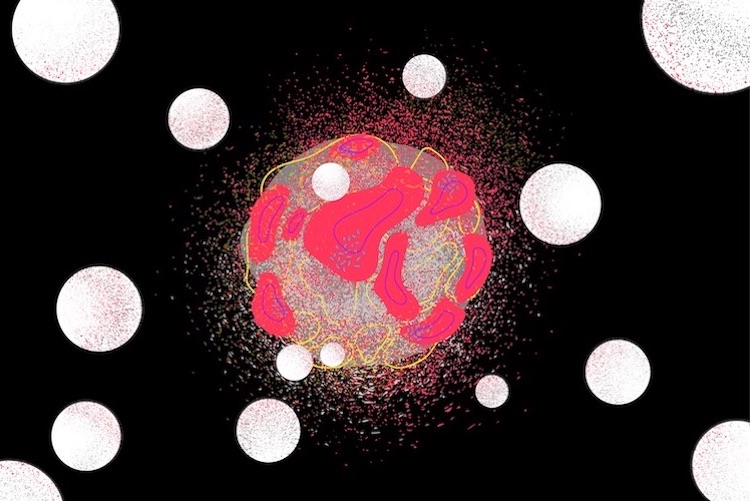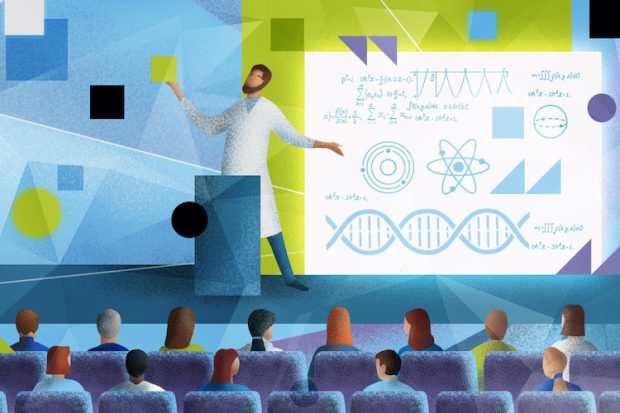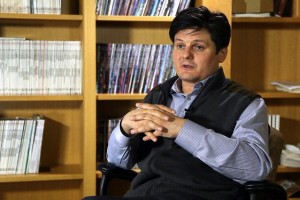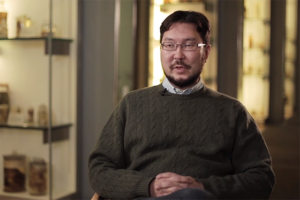Predicting Functional Effect of Human Mutations
Harvard Associate Prof. Shamil Sunyaev on protein evolution model, human disease mutations, and the help of di...

Nowadays, there are different ways to interpret the term chemotherapy. Currently, what we call chemotherapeutic drugs are substances that lead to the destruction of cancer cells, but, to be more precise, what these compounds do is compromise cellular proliferation. This means interfering with the integrity and replication of DNA or disrupting the mitotic spindle.
So which were the first identified anti-cancer compounds? During the World Wars, various chemical weapons were deployed in battles. Among these, of special interest, is the nitrogen mustard gas, later identified to be a DNA alkylating agent. During an incident on the Italian island of Bari, a ship loaded with nitrogen mustard gas exploded by accident, and a large amount was released on the citizens of the city. Tragically, but also interestingly, the survivors suffered from anemia. The bone marrow’s ability to generate novel blood cells was compromised. The class of alkylating agents was later shown to also decrease proliferation in leukemic cells, making them one of the first chemotherapeutics established in treatment.
Another early chemotherapy approach was invented by the famous Boston scientist Sidney Farber. He identified the folic acid antimetabolite aminopterin that interfered with the synthesis of DNA. In a pilot trial, he injected a young leukemia patient with aminopterin and remarkably, the child went into remission. Unfortunately, this remission didn’t last very long, and the disease returned, but the concept was there: chemical compounds were able to suppress cancer cell growth.

Thus began the hunt for anti-cancer drugs. However, soon this search proved to be a difficult and fairly unscientific enterprise. The drugs were identified based on the evidence of their anti-cancer potency in a trial-and-error fashion rather than by molecular explanation of the therapy.

In the late 90s, a different molecular approach was taken to find novel anti-cancer agents, and so-called targeted therapies became an alternative to classical chemotherapy treatment. This molecular approach uses compounds that specifically target a certain molecule in the cancer cell, typically a signaling transducer protein that mediates cellular proliferation. The search for these therapies is rarely successful, but some compounds produce impressive remission in certain subtypes of cancers. For instance, the small molecule inhibitor Gleevec (Imatinib), which disrupts the activity of the Bcr/Abl oncogene, is able to cause permanent remission in a large proportion of chronic myeloid leukemia (CML) patients.
However, such powerful compounds have not been found for most other cancer entities. Why is that? On the one hand, cancers are often able to avoid such targeted drugs by gaining independence from the targeted factor, for instance, by using an alternate signaling pathway through kinases. Resistance can also be developed against classical chemotherapeutics, but as these target entire molecular machinery such resistance is much more rarely achieved. Consequently, the main therapy for cancer still consists of classical chemotherapeutics and has not been replaced by targeted therapies.

Over 50% of all cancers carry a mutation in the tumor suppressor gene p53. P53, also called the “guardian of the genome”, serves as a master regulator of a cell’s choice either to repair the damage and survive or to undergo programmed cell death (apoptosis). As a result, it was predicted that tumor cells without p53 would become much more sensitive toward classical chemotherapeutics since they lacked an important regulatory mechanism.
It was in the late 90s in the laboratory of Bert Vogelstein that one of his co-workers, Binz, managed to remove p53 from the colorectal cancer cell line HCT116. Back then, it was a great scientific accomplishment. Afterward, they compared the cell lines with and without p53, checking how they would react to the addition of different classes of classical chemotherapeutics. They expected cell lines without p53 to be much more sensitive to chemotherapeutics since they were missing a master regulator. However, the results were somewhat disappointing: different classes of chemotherapeutics had different effects on the cells, both with or without p53.
The p53 status of a cancer cell is its most common defining characteristic: only half of all cancers carry a p53 mutation, which makes those cells different from the healthy cells of the patient. So how could we exploit this difference? One idea is to pharmacologically activate p53 and try to protect healthy cells from chemotherapeutics acting in sensitive cell phases such as DNA replication and cell division. This is an interesting approach, as patients treated with classical chemotherapeutics often suffer side effects, such as anemia, digestive inflammation, and loss of hair, all of which are associated with the impairment of tissue stem cell populations. Accordingly, the benefits of this method of protection are obvious: not only do chemotherapeutic side effects put a limit on drug dosage, but they also create physiological and psychological problems for the patient and can even become life-threatening.
So is there a way to activate p53 pharmacologically? The small molecule inhibitor Nutlin has been found to stabilize p53 in a non-genotoxic fashion. It stabilizes the gene against its antagonist and negative regulator MDM2 by binding into their interaction pocket. In vitro experiments in cell lines show promising results, and Nutlin treatments seem to pause the cell cycle and protect the cells from replicative and mitotic toxic drugs. In animal experiments, however, Nutlin actually induces the anemia it is supposed to protect from.
What happens is that somehow, the inhibitor causes apoptosis rather than cell cycle arrest in these blood stems cell populations. One way to improve the situation could be the inhibition of apoptosis through specific small molecule compounds. This approach is of current scientific interest since different auto-inflammatory, neurodegenerative, and liver diseases induce apoptosis during their pathogenesis. With a better understanding of the molecular biology of the Nutlin action, p53 could become a protective agent in combination therapy of classical chemotherapeutics and targeted therapies.

A hugely important macromolecule that is targeted by many classes of classical chemotherapeutics is the one that harbors our genetic code: DNA. Therefore, the maintenance and repair of DNA are important hallmarks of a cell’s ability to survive. They also represent an interesting field for the development of anticancer therapies. Biochemically, DNA damage manifests itself as chemical modification of bases, such as alkylation, and DNA breakage, i.e., DNA single and double-strand breaks. These DNA alterations result in the activation of different DNA damage response proteins.
Initially, only a few factors had been identified: the apical DNA damage kinases ATM, ATR, Chk1, and Chk2. Over the years, however, their downstream factors have been revealed. They are numerous, each consisting of different classes of proteins. They include mainly kinases but also other proteins, such as ubiquitin-ligases. One of these ubiquitin ligases is the famous BRCA1 (Breast Cancer 1), a factor associated with breast and ovarian cancers. BRCA1 has become important as a prognostic marker both for classical chemotherapy and targeted therapies, meaning that its presence or absence has a strong impact on the physician’s therapeutic decision. However, BRCA1 remains a standalone case among the DNA damage factors: it alone has this prognostic impact on clinical decisions.
At first, cancer researchers dreamed of measuring the levels of DNA damage factors and designing a targeted therapy according to the results. However, this approach has been found to be largely unsuccessful. On the other hand, a new approach is being tested: specifically inhibiting the DNA damage response by inhibiting the DNA damage kinases ATM, Chk1, and Wee1 by using specific small molecule inhibitors against them. It has been shown in cell lines in vitro as well as in animal models that an impaired DNA damage response can amplify the damage caused by classical chemotherapeutics when treated in combination with a DNA damage kinase inhibitor. As of 2016, this approach has been taken into early clinical trials.
Classical chemotherapeutics have not been able to cure all cancers, but for some, and especially for childhood cancers, they are able to prolong life or even cure the disease. The search for effective anti-cancer compounds has been slow but steady. In such a difficult and multifaceted field as cancer, merely steady improvements are desirable, even if they are too slow to raise high expectations. These steady improvements should encourage us to keep putting more and more effort into research to improve the treatment situation for cancer patients.
Edited by Alexandra Michurina

Harvard Associate Prof. Shamil Sunyaev on protein evolution model, human disease mutations, and the help of di...

Biologist Arkhat Abzhanov on geometric morphometrics, ancestors of modern birds, and mathematical principles a...

Microbiologist Kim Lewis on the great plate count anomaly, siderophores, and the human microbiome